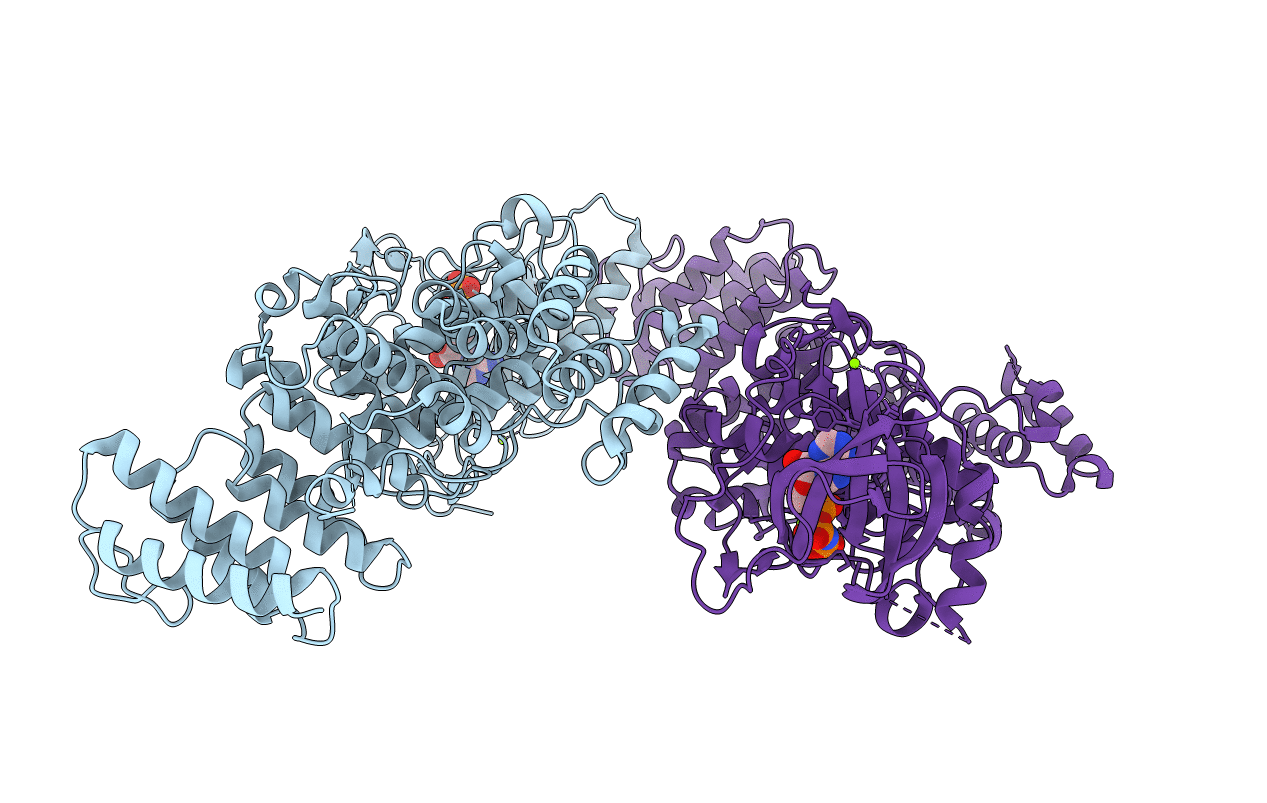
Deposition Date
2021-05-18
Release Date
2021-10-13
Last Version Date
2023-10-18
Entry Detail
PDB ID:
7MXB
Keywords:
Title:
Crystal structure of the S/T protein kinase PknG from Corynebacterium glutamicum in complex with AMP-PNP
Biological Source:
Source Organism:
Host Organism:
Method Details:
Experimental Method:
Resolution:
2.20 Å
R-Value Free:
0.24
R-Value Work:
0.20
R-Value Observed:
0.21
Space Group:
P 1 21 1


